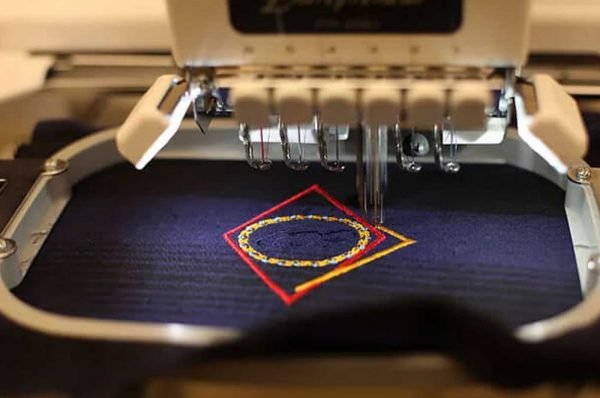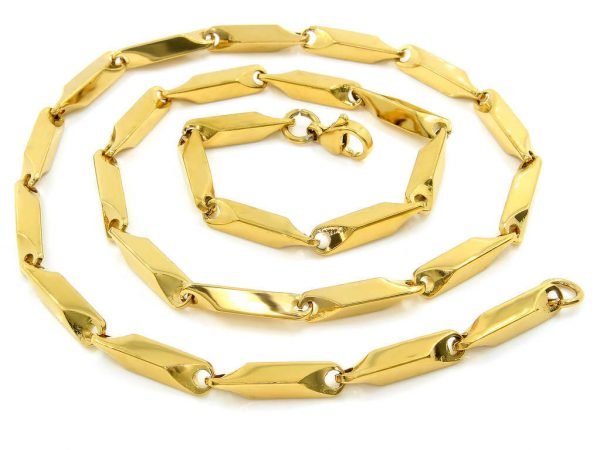Ever noticed the beautiful patterns on your clothes and wondered, “Who did that?” Well, interestingly, most of the time it isn’t an artisan or good’ol embroider making those enchanting patterns! Instead, machines have joined the fashion party, quietly stitching intricate designs onto our favorite outfits.
Machine embroidery, once a futuristic dream, has become a cornerstone of the modern fashion industry. This technology, with its ability to create intricate designs and vibrant patterns at speed, has irrevocably altered the way we design and wear clothes.
Beyond mere efficiency, machine embroidery has opened doors to new avenues of artistic expression. Once exclusive, elaborate details and captivating patterns are now accessible to a wider audience. However, beneath the dazzling surface lies a complex process, a meticulous blend of programming and mechanics that guides the dance of digital threads.
Well, in this blog we delve into the fascinating world of machine embroidery. We’ll be exploring its rich history, understand the intricate interplay between technology and creativity, and uncover the significant impact this technique has had on the fashion landscape.
So, keep reading as we unravel the hidden artistry that stitches together beauty and innovation, thread by thread.
Table of Contents
Historical Perspective
Embroidery, once a manual craft, underwent a metamorphosis during the Industrial Revolution. The transition to machine-driven processes, propelled by embroidery digitizing, marked a turning point. This shift, like threads converging into a pattern, enabled the mass production of intricate designs that were once meticulously handmade.
- Industrial Threads Unraveling Craftsmanship: The Industrial Revolution threads the needle of change, transitioning embroidery from handcrafted to machine-driven precision.
- Economic Tapestry Unfolding: Mass production not only revolutionized craftsmanship but also made intricate designs economically feasible, altering the fabric of fashion accessibility.
- Globalization of Style: Mass production led to the globalization of fashion, weaving a tapestry where styles transcended geographical boundaries.
Impact on Fashion Design
A. Precision in Detail
Machine embroidery ushered in a new era of precision, where each stitch tells a story. The art of embroidery digitizing enables designers to replicate intricate details with unparalleled accuracy, transforming visions into tangible, flawless patterns.
- Stitching Stories: Every stitch, a storyteller – machine embroidery, and digitizing merge to create precision narratives on various fabrics.
- Microscopic Marvels: The precision extends to microscopic details, allowing designers to explore intricate patterns that were once thought impossible.
- Timeless Elegance: Precision in machine embroidery brings forth timeless elegance, with designs that stand the test of trends and time.
B. Customization
The democratization of fashion became a reality through machine embroidery. Digitizing designs empowers designers to offer personalized creations, weaving a collection of inclusivity and accessibility in the fashion industry.
- Democratizing Threads of Style: Personalized designs, woven through digitization, unravel the exclusivity of fashion, making it accessible to all.
- Individuality Woven: Each personalized piece becomes a canvas for individuality, breaking free from the one-size-fits-all approach.
- Embracing Diversity: Customization fosters a celebration of diversity in fashion, where unique styles find expression.
Technological Advancements
A. Computer-Aided Design (CAD)
The evolution of machine embroidery intertwines with CAD technology, seamlessly translating creative concepts into digital realities. This integration streamlines the embroidery digitizing process with an artful precision that echoes through every design.
- Artful Precision with CAD: Creativity finds digital expression, seamlessly intertwining with the precision of embroidery digitizing through CAD.
- Virtual Sketchpad: CAD technology becomes the virtual sketchpad for designers, allowing them to experiment and iterate before the physical creation.
- Enhancing Collaboration: CAD fosters collaborative design processes, enabling designers to work seamlessly across geographical distances.
B. Smart Embroidery Machines
In the ongoing technological evolution, smart embroidery machines have emerged as game-changers. Thanks to the rapidly advancing technology, these smart yet cheap embroidery machines are infused with artificial intelligence, enabling them to not only reduce costs but also accelerate production speed, enabling businesses to achieve higher efficiency and ingenious innovation.
- Smart Threads of Efficiency: Artificial intelligence threads through machines, transforming the production narrative into one of efficiency and innovation.
- Adaptive Creation: Smart machines adapt to evolving designs in real-time, reducing errors and increasing production efficiency.
- Human-Machine Symbiosis: The integration of AI creates a symbiotic relationship between human creativity and machine efficiency.
Future Trends
A. Sustainable Embroidery
The future of machine embroidery embraces sustainability, weaving eco-friendly practices into the fabric of the industry. Embroidery digitizing becomes a tool for reducing waste and environmental impact, stitching together a narrative of responsible design.
- Sustainable Stitching: Embroidery digitizing threads through sustainability, reducing waste and environmental impact, crafting designs with a conscience.
- Eco-Friendly Fibers: Future trends see a shift towards using eco-friendly fibers, merging sustainability with style.
- Circular Fashion Economy: Sustainability in embroidery contributes to a circular fashion economy, where garments are designed to be recycled and reused.
B. 3D Embroidery
In the future landscape, 3D embroidery emerges as a captivating chapter. Adding depth and texture to fashion designs, this innovative technique transforms garments into sensory experiences, crafting narratives that go beyond visual appeal.
- Depth Beyond Vision: 3D embroidery threads depth and texture, transforming garments into sensory experiences that go beyond visual aesthetics.
- Interactive Textures: Imagine garments with interactive textures, responding to touch and temperature, creating a dynamic fusion of technology and design.
- Virtual Fashion Experiences: 3D embroidery paves the way for virtual fashion experiences, where consumers can engage with garments in a virtual space.
Tips for Integrating Machine Embroidery in Fashion
A. Collaboration with Embroidery Digitizing Experts
For businesses seeking integration, collaboration with embroidery digitizing experts becomes a crucial chapter. Companies like Genius Digitizing stand as essential partners, weaving expertise into the fabric of seamless integration.
- Weaving Expertise: Genius Digitizing becomes the partner in weaving expertise, ensuring high-quality digitized designs for unique project requirements.
- Tailored Solutions: Collaboration ensures tailor-made solutions, catering to the unique needs of each fashion endeavor.
- Continuous Innovation: Ongoing collaboration fosters a culture of continuous innovation, pushing the boundaries of what machine embroidery can achieve.
B. Experimentation and Innovation
The narrative concludes with a call for experimentation and innovation. Businesses are encouraged to thread the unconventional, incorporating embroidery into unexpected materials, and crafting bold designs that stand out in the competitive fashion landscape.
- Threads of Bold Innovation: Unleash creativity by experimenting with unconventional uses of machine embroidery, weaving a narrative of bold innovation.
- Fashion as a Canvas: Treat fashion as a canvas for experimentation, where each design becomes a statement piece in the ever-evolving tapestry.
- Consumer-Centric Innovation: Innovate with the consumer in mind, creating designs that resonate with the evolving tastes and preferences of the fashion-forward audience.
Conclusion
From its humble beginnings as a technological marvel to its current status as a ubiquitous fashion tool, machine embroidery has undoubtedly woven itself into the very fabric of our wardrobes. It has democratized intricate designs, empowered self-expression, and pushed the boundaries of what’s possible in garment creation.
As we look towards the future, machine embroidery continues to evolve. New technologies promise even greater precision, speed, and creative possibilities. Whether it’s personalizing clothing with unique monograms or crafting haute couture masterpieces, the future of fashion seems inextricably linked to the threads spun by this remarkable technology.
So, the next time you admire a beautifully embroidered piece, remember the hidden artistry that lies beneath. It’s a testament to the power of human ingenuity and technology working in tandem, forever changing the way we adorn ourselves and express our individuality.





